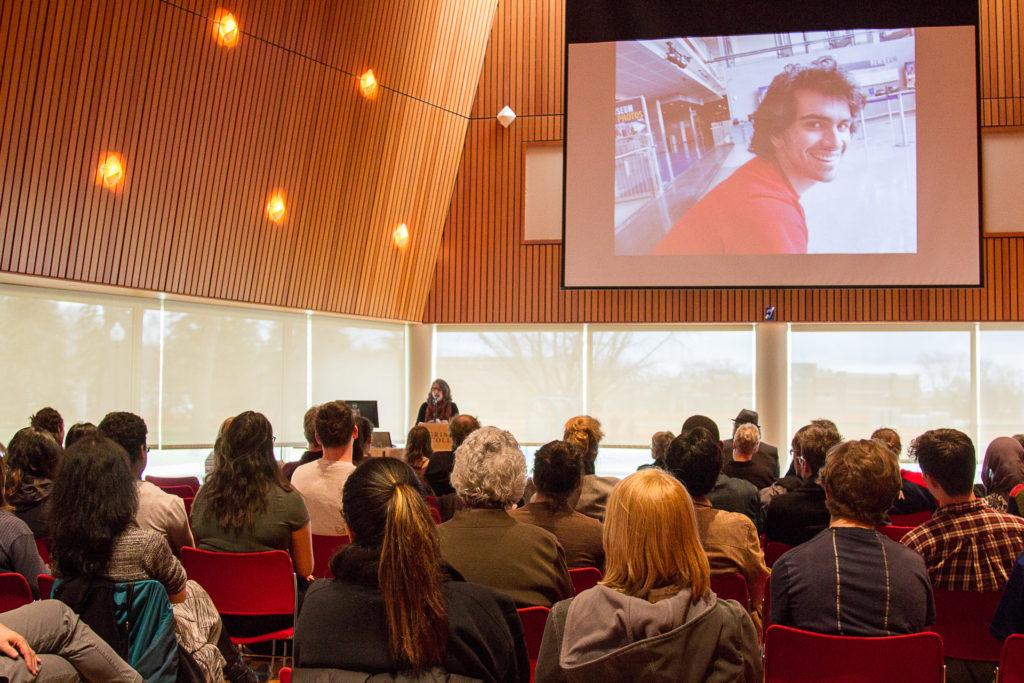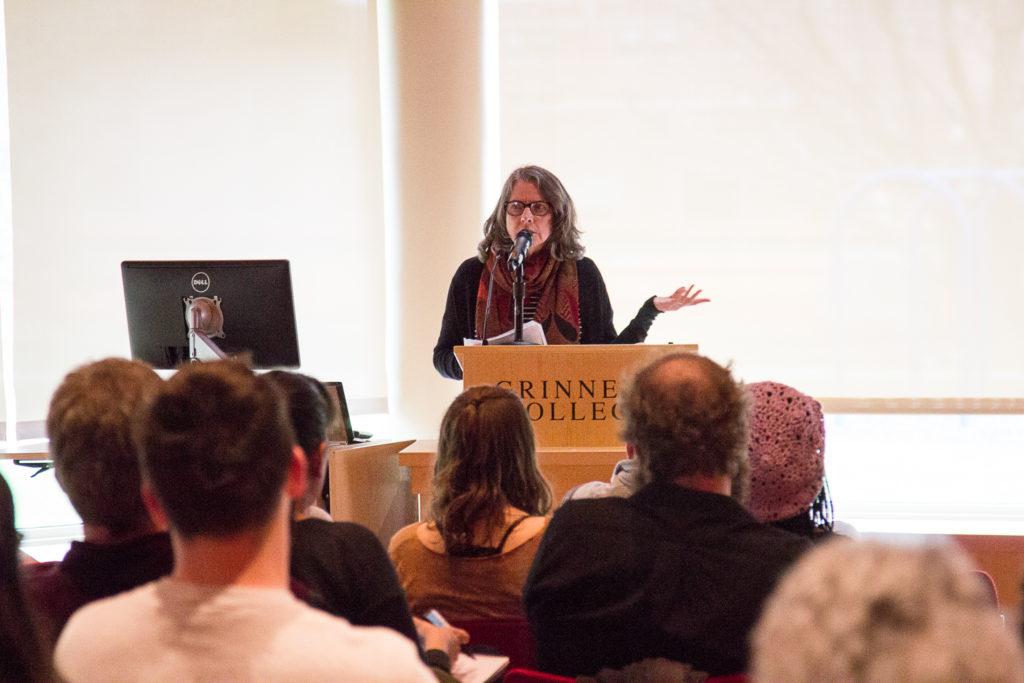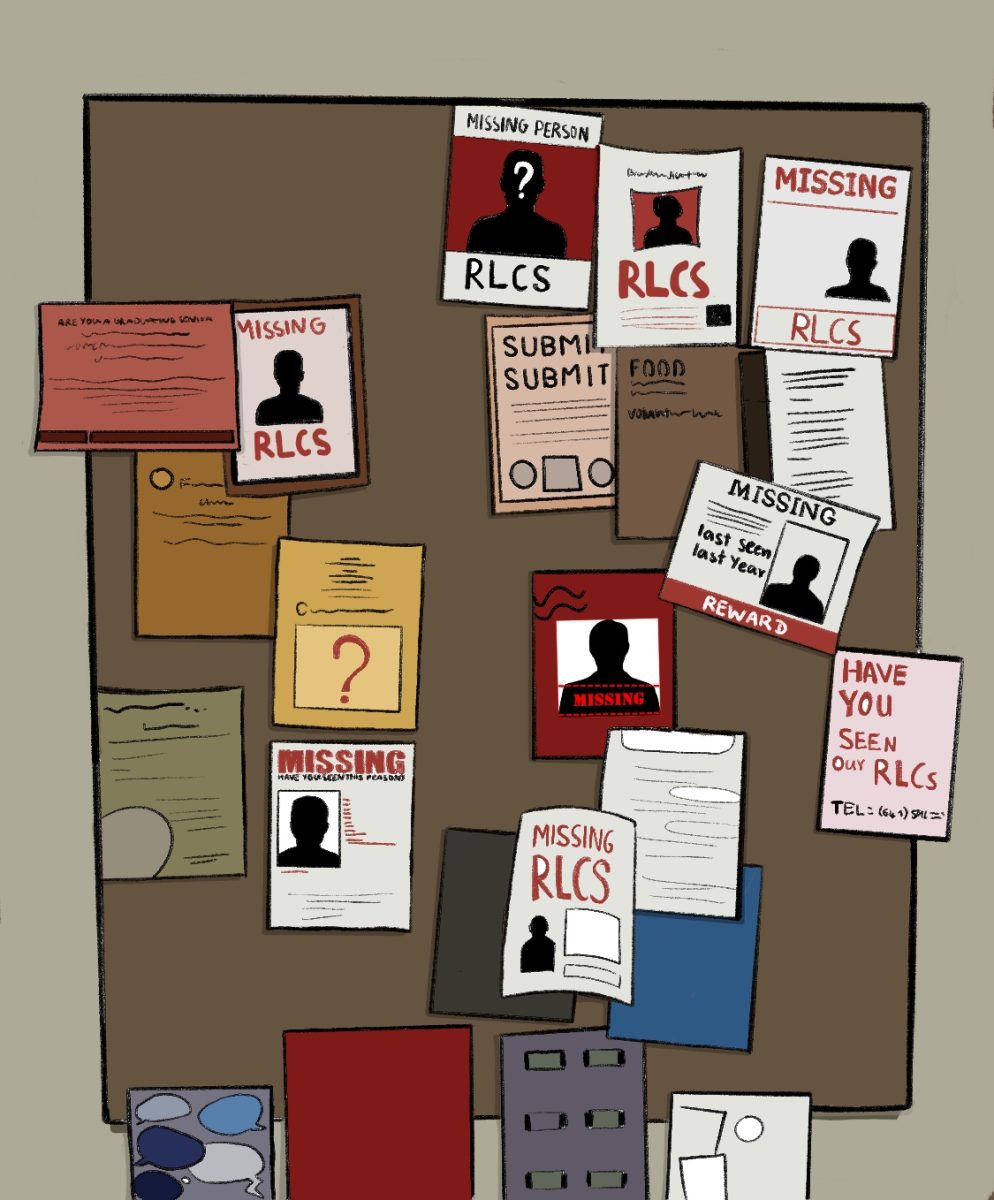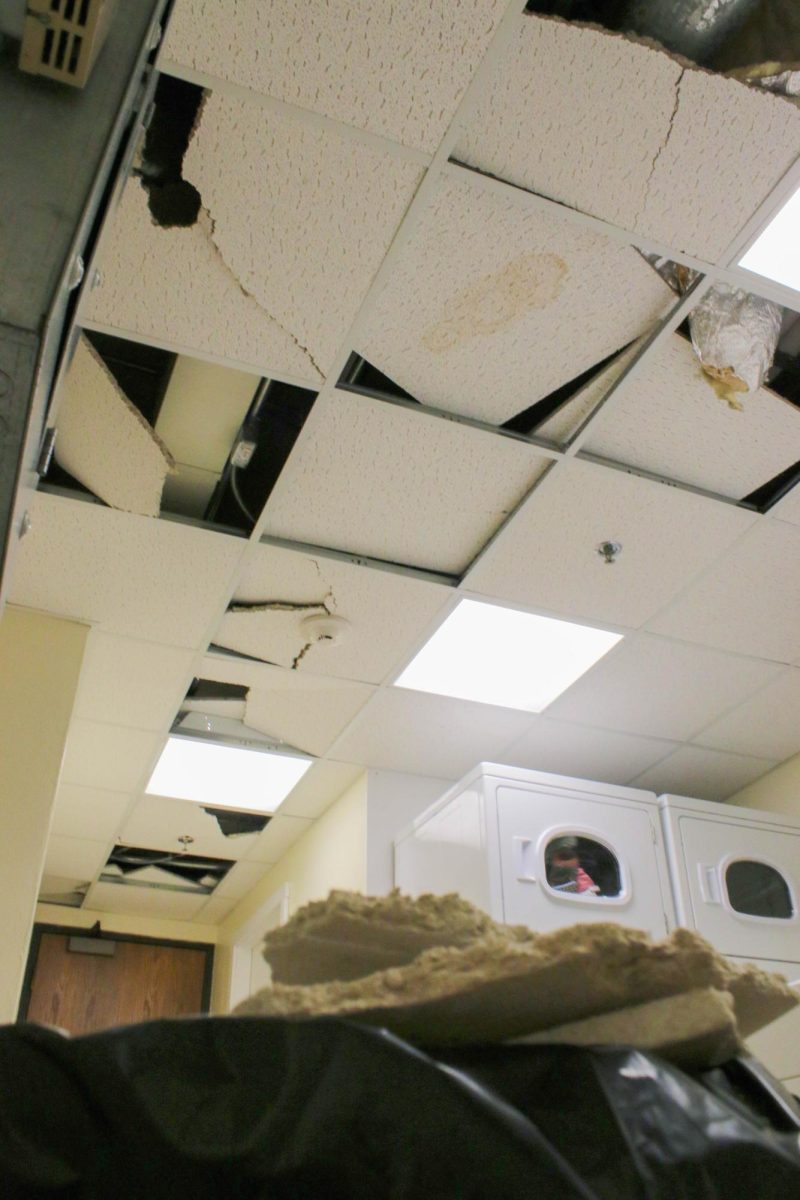

When Armando ‘Mando’ Montaño ‘12 first met Dale Maharidge, the two hit it off immediately. Maharidge was coming through to congratulate Montaño’s parents on their recent marriage, but instead of sitting around and talking with the adults, Maharidge and Montaño spent the day “goofing off.” By all accounts, however, this wasn’t unusual. The bright-eyed four year old had a tendency to pull most people easily into his orbit — even serious Pulitzer-prize winning journalists.
“They just liked each other,” said Diane Alters ’71, Montaño’s mother and a professor of journalism at Colorado College.
Always surrounded by journalists, Montaño quickly combined his enthusiasm for life with an affection for writing. He carried this disposition into college and beyond, working for The S&B while at Grinnell and then for the Associated Press after graduation. In 2012, he died while covering violence in Mexico City.
In honor of Montaño, his parents, Alters and Mario Montaño, worked to set up a speaker fund, the Armando Montaño Memorial Lecture, to bring more journalist speakers to campus. To inaugurate the series, the College and Alters brought in Maharidge and his friend and partner Michael Williamson, a photojournalist, to both attend a series of Q&As and deliver a lecture about their careers in the field.
Williamson and Maharidge first met while working for the Sacramento Bee in the late 1970s, where they were under the editorial guidance of Alters. A friendship quickly formed among the three easygoing, young journalists and they soon found themselves collaborating more and more.
“We hung out together, we liked working together,” Maharidge said. “We realized we liked working on the same kinds of things, so we quickly bonded.”
From the beginning the stories that connected Maharidge and Williamson were those that dealt with the trials of working class America. Maharidge grew up near Cleveland, OH, the son of a steelworker, and Williamson was orphaned as a young child, only eventually finding himself in the loving home of an exceptional foster family. It was these circumstances, both Maharidge and Williamson say, that were responsible for their interest in those left behind during America’s economic growth.
While they may have already been primed to empathize with their subjects, the catalyst to their careers began with an investigative piece on the “modern day hobo” in 1982. The pair was initially excited simply for an excuse to jump trains for a couple days, but after talking with the new “hobos,” Maharidge and Williamson quickly realized that the heart of the story lay deeper than the California rails.
“The trains were full of job-seeking hobos, new hobos, just like in the 1930s — looking for work,” Maharidge said. “Very quickly we knew we had a big story: why are they out here doing this? Where did they come from?”
To answer this question, Williamson and Maharidge spent the next several years travelling around the country, exploring the shadows of American prosperity. They eventually ended up in Rust Belt, Maharidge’s home territory, to witness the fallout from the destruction of the manufacturing sector.
“I heard about the steelworks in Youngstown being dynamited. In the 1930s, they put the [steel] mills on ‘hot idle,’ they would lay people off and then they would start it up again. But no, [this time] they were blowing up the mills. Jobs were permanently leaving America,” Maharidge said.
Their tragic mission chronicling the process of globalization and the hardships of workers culminated in two books, And Their Children After Them and Journey to Nowhere: the Saga of the New Underclass, the former which won a Pulitzer and the later which inspired Bruce Springsteen to write his famous ballad “Youngstown.”
The two journalists talked extensively about their continuing friendship with “The Boss,” as their focus on the working class meshed well with musician’s own lyrical subjects. One night, Springsteen goaded both Maharidge and Williamson into sneaking onto a crumbling steel mill near Youngstown, Ohio so that the singer could witness firsthand what he had sung about.
Having lived and traveled with American workers for several decades, Maharidge and Williamson have watched an anger in the working class slowly simmer to the surface. They both attribute the nationalism and xenophobia that has taken hold of the nation as a byproduct of this anger, crudely structured and fueled by the campaign and presidency of Donald Trump.
“There was a recovery [from the 2008 crash] … but for the coal miner, nothing. Yet they had to watch another Best Buy be built, they had to watch another Bed, Bath and Beyond … then a guy comes along and says ‘I know who the boogeyman is, it’s all of Washington, and it’s all liberals and it’s NAFTA and it’s immigrants.’ And while they used to have to dog whistle, now they could put their confederate flag in the front yard,” Williamson explained.
While the situation does not look good now, Maharidge and Williamson look to the example of California, which experienced a similar bout of xenophobia in the 1990s, only to be overcome through the work of a diverse, multicultural voting base. They could only express hope that a similar phenomenon will happen on nationwide scale.
But for now, the pair will continue their work shedding light on the struggles and injustices faced by people here and around the globe — as well as helping prepare students of journalism to carry on this important work with the help of the Armando Mantaño Memorial Lecture Fund.






























































